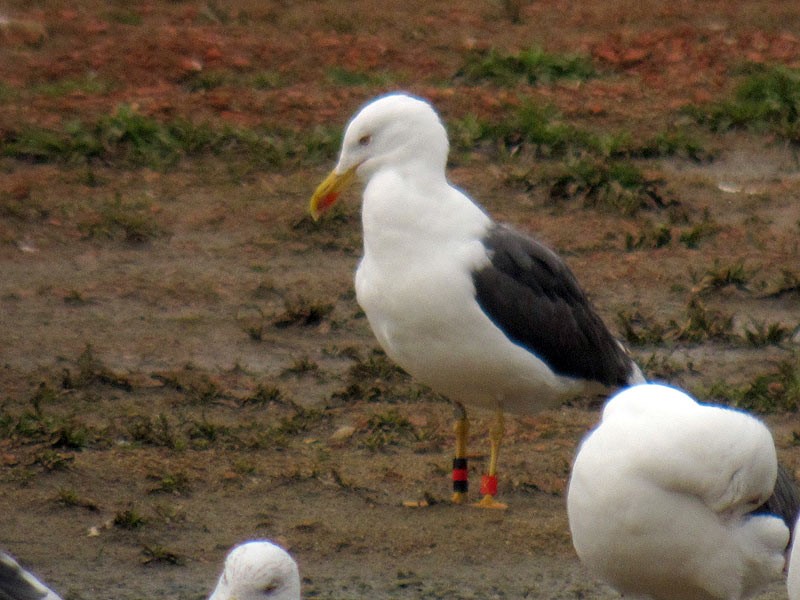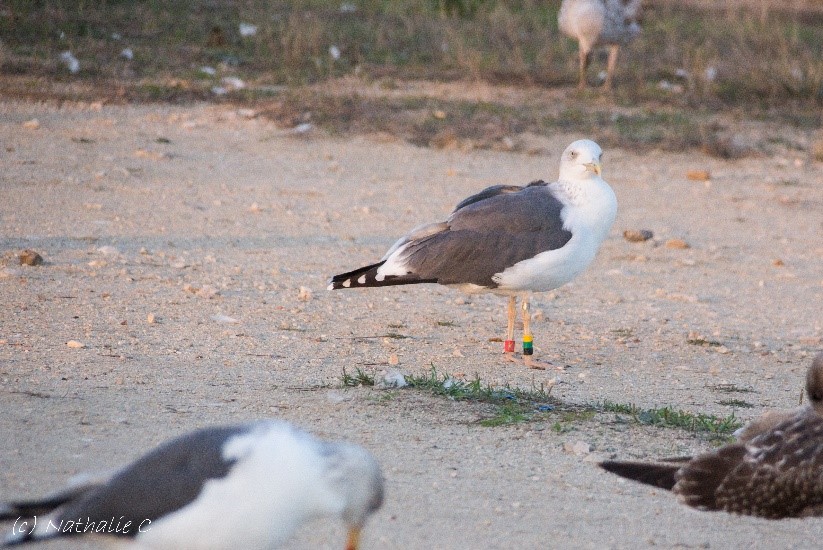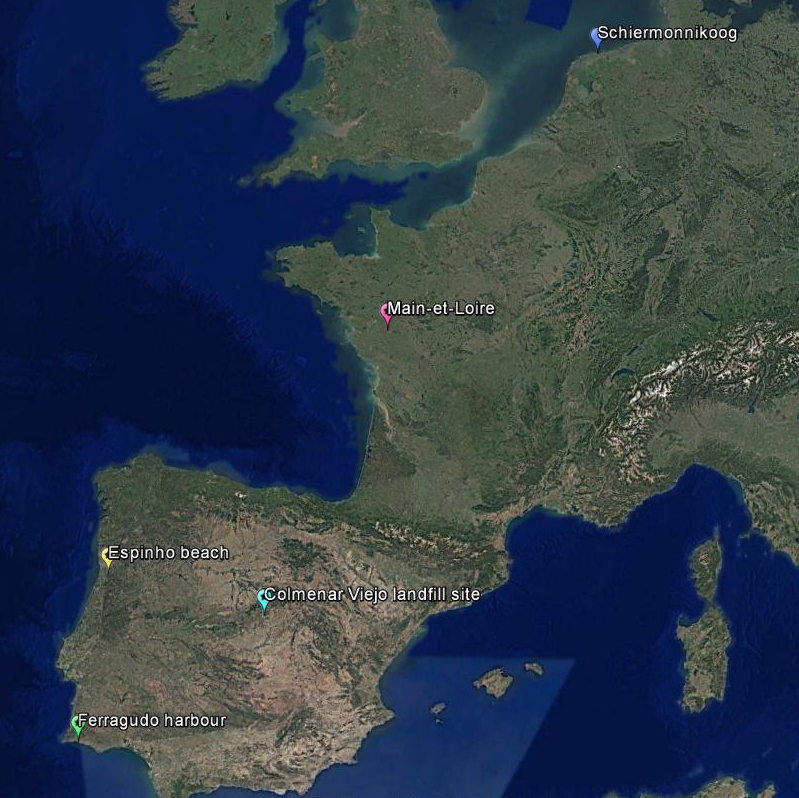Lesser Black-backed Gulls from Schiermonnikoog enjoy their winter holiday
Tuesday, April 3rd, 2018
Species: Lesser Black-backed Gull
Project: Gull interactions with offshore wind parks

Gull 5532 taking it easy at a landfill near Main-et-Loire, France (Image credit: Alain Fossé)
In the summer of 2017, 20 Lesser Black-backed Gulls (Larus fuscus) were fitted with UvA-BiTS GPS tags as part of a study into the potential impacts of offshore wind parks on bird movement, migration and breeding. The gulls were captured in a breeding colony on Schiermonnikoog, a Dutch island located in the North Sea.
This is the first time birds from the colony have been tagged, so we are in the process of discovering new information about the movement behaviour of these birds, including fine-scale foraging movements over sea and land during the breeding season and their large-scale annual migration routes and timings.

Gull 5559 at Ferragudo harbour in the Algarve, Portugal (Image credit: Nathalie Colpaert)
The gulls left the surroundings of the colony after we tagged them during the breeding season last July. Since we are not able to download GPS data until they return for breeding in the summer of 2018, their non-breeding movements remain somewhat of a mystery. However, thanks to colour ring re-sightings of the gulls in their winter habitats, we do have some idea!
A few of our tagged birds have been spotted in the popular holiday spots of southwestern Europe, like the beaches and harbours of Portugal, and they have also been seen enjoying the occasional trip to landfills in Spain and France.

Locations of winter re-sightings from lesser black-backed gulls tagged at their breeding colony on Schiermonnikoog (Google Earth image)
Latest Highlights

Overwintering and foraging areas used by a 24-year old Eurasian spoonbill
Wednesday, April 18th, 2018

Lesser Black-backed Gulls from Schiermonnikoog enjoy their winter holiday
Tuesday, April 3rd, 2018

Oystercatchers returning from inland breeding grounds
Sunday, July 23rd, 2017

GPS tracker with SMS messaging
Monday, November 2nd, 2015

Ronny found back, three years after deployment of the UvA-BiTS GPS-tracker
Wednesday, July 8th, 2015

Lesser Black-backed Gulls feed on potato crisps in Moeskroen
Wednesday, November 13th, 2013

‘Vogel het uit!’ has won the 2013 Academic Year Prize
Tuesday, November 5th, 2013

Back in Europe: UvA-BiTS Honey Buzzard photographed at the Strait of Gibraltar
Wednesday, May 15th, 2013

UvA-BiTS database passes 10 million record mark
Wednesday, May 8th, 2013

Gulls pouring into the Kelderhuispolder colony
Wednesday, April 17th, 2013

To the Karoo and back: Mate replacement & GPS tracking study of an ousted eagle
Monday, March 25th, 2013

Meeting Montagu’s Harrier Edwin in Senegal
Wednesday, March 20th, 2013

Oystercatchers: Learning how and where to survive
Wednesday, August 29th, 2012

New GPS mini-tracker facilitates investigation into movement of smaller animals
Wednesday, July 4th, 2012

Over 5 million GPS fixes in the UvA-BiTS database
Thursday, June 21st, 2012

Tagged Lesser Black-backed Gulls return to Orford Ness
Wednesday, April 18th, 2012

Gulls spotted in their over-wintering areas
Wednesday, December 21st, 2011

The UK a top vacation destination in 2011
Wednesday, July 13th, 2011

A long way from home
Sunday, June 26th, 2011

Visiting Amsterdam for a day
Saturday, May 14th, 2011

Female deserts brood, male raises chicks
Friday, May 13th, 2011

Wintering range in Sierra Leone
Friday, May 13th, 2011

Camera watches foraging Oystercatchers day and night
Thursday, May 12th, 2011

The return of a bird presumed dead
Wednesday, May 11th, 2011

Texel gulls back from wintering areas
Sunday, May 1st, 2011

First Lesser Black-backed Gull returns to the breeding colony
Monday, April 13th, 2009

